- Gopalan C, Rama Sastri B.V, Balasubramanian, S.C, Nutritive Value of Indian Foods, National Institute of Nutrition, Hyderabad, 2002.
- Mahtani R. The Ultimate Indian Diet Book, Macmillan India Ltd, 2005.
- Information availed from medicinal nursery, Jijamata Udyan, Byculla, Mumbai
- Basil, fresh Nutrition Facts & Calories - (http://nutritiondata.self.com/facts/spices-and-herbs/213/2)
About
“The home gardener is part scientist, part artist, part philosopher, part ploughman.” ~John R. Whiting
Preparing food with different herbs not only improves the flavor of the food but also provides myriad of health benefits. In today’s fast-paced life natural nutrition is hard to come by especially in the big cities. One can create a cozy little kitchen garden either at home or backyard in just a few days. It’s even better to grow a “healing garden”, comprising herbs that will help protect against disease. The healing garden can be grown either in the kitchen window, balcony or a garden. So get ready and start a partnership with Mother Nature and open a natural health pharmacy in your own house.
Sweet Basil (Ocimum basilicum)
How to Grow:
Get some basil leaves from the store or local market. Pluck two or four top leaves from each stem and plant them in a basket or a pot filled with well drained regular soil or compost. Allow 2 feet deep and 1 foot wide space for the plants to grow. Give it plenty of sunlight. The herb will be ready for use in 10 days. Just pluck the leaves and add them to your cooking. You can crush or tear the leaves or just add them whole to a vegetable stir fry or any dish you are preparing. You can grow your own basil from basil seeds as well but it is best to start off with basil saplings in the beginning.
Nutrition
- Fresh basil contains good amounts of folic acid. It is also a good source of vitamin E (Alpha Tocopherol), riboflavin and niacin, and a very good source of Dietary Fiber, vitamins A, C, K, and B6, and minerals such as potassium, iron, calcium, zinc and manganese.
- Dried basil is a good source of potassium, iron and calcium. The strong taste of basil promotes production of saliva, increases appetite and helps in digestion.
- Basil has anti-inflammatory and antibacterial properties.
- Basil adds a zing to mild vegetables like brinjal (egg plant), potatoes, cabbage, carrot, cauliflower and spinach.
Tulsi (Ocimum sanctum)
Tulsi also known as Indian basil or Holy basil is a close relative of sweet basil. It has been revered in India for over 5000 years as a healing balm for body, mind and spirit.
How to Grow:
Tulsi is easy to grow. Sow the tulsi seeds in a small pot, just under the surface of the soil and press it firmly. The seeds have to be watered until germination, which occurs within 1 to 2 weeks. It prefers full sun, rich soil and plenty of water. The seeds have to be placed 1 to 2 feet apart.
Nutrition:
- Modern research offers impressive evidence that tulsi reduces stress, relieves inflammation, eliminates toxins, prevents gastric ulcers, improves digestion and provides a rich supply of antioxidants and other nutrients.
- Its consumption with other herbs or in a certain way of a particular quantum each day has also known to keep blood sugar and blood pressure under control.

Mint (Mentha arvensis/piperita)
Mint or pudina is liked for both its refreshing flavor and its medicinal qualities. It adds an extra dimension to both sweet and savoury dishes.
How to Grow
Mint is very simple to grow. It grows rapidly during spring season. Pluck the runners (stalks) and plant them in a small pot containing well drained soil. Although it can grow in all types of soils, it prefers slightly acidic soils and moderately rich mosit soil. Don’t over water the plants. In a few days time you can start using your home grown mint.
Nutrition
- The menthol in mint is known to soothe the lining of the digestive tract.
- Peppermint is an excellent breath freshner and a good remedy for gingivitis.
- An infusion of fresh mint leaves and honey in a cup of hot water helps to settle the stomach after a big meal. It also helps to keep acidity away. Caution – mint tea does not suit infants. It may cause choking reaction in them.
- Herbal tea made with mint, ginger and honey can be a most refreshing beverage.
- Mint is a great source of calcium, iron, antioxidants and vitamin A.
Wheat Grass (Triticum aestivum)
Wheat grass is a tender green shoot of the wheat. It is known as a living food and is certainly the freshest food. Its juice has amazing properties and has often been described as “nectar of rejuvenation” or “plasma of youth” or even the “blood of life”.
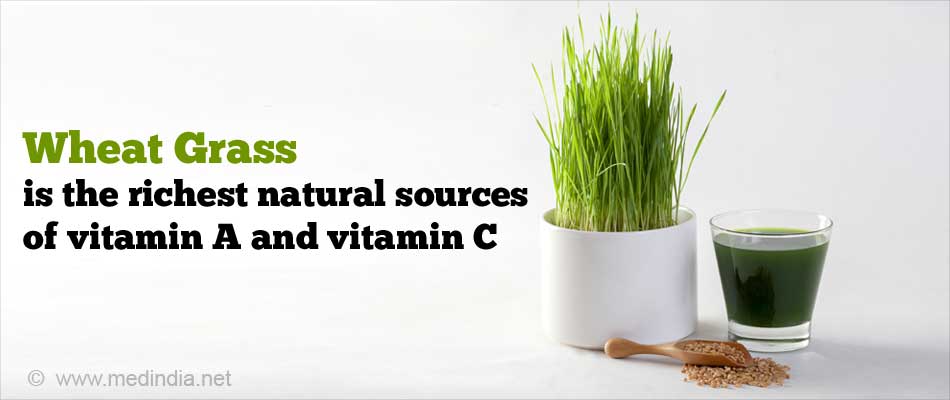
How to Grow
To grow wheat grass at home, soak an adequate amount of unpolished wheat grains in water in a clean container overnight. Spread the soaked wheat grains on the trays filled with about one and half inch of premoistened soil or compost. Ensure that the soil is free from fertilizers or chemicals. The grains should not be touching one another. Place the tray in a well ventilated place under indirect sunlight. Leave them to grow till about 9 inches tall. Water twice a day using a spray bottle In 8 to 12 days the needs to be harvested. The harvested wheat grass can then be chewed or blended to get juice. The downside of growing wheat grass indoors is that since every wheat seed won’t sprout, the ungerminated seeds can develop molds which then spread to the nearby sprouts. This may ruin the taste of the wheat grass juice and in some cases it can cause allergic reactions as well.
Nutrition
- It is a storehouse of vitamins, minerals, enzymes, and chlorophyll.
- It is one of the richest natural sources of vitamin A and vitamin C.
- It is an excellent source of calcium, iron, magnesium, phosphorous, potassium, zinc and other minerals too.
- Wheat grass acts as an energizer, helps to detoxify, acts as a natural skin ointment, regulates blood sugar levels, controls hairfall problems.
Garden Cress (Lepidium sativum)
Garden cress commonly known as aliv in Marathi or halim in hindi, are deep brown color tiny seeds. They swell on soaking. In India garden cress seed laddoos and kheer is commonly prepared.
How to Grow
To grow garden cress, arrange a loose layer of soil in a pot. Sprinkle the garden cress seeds on top and moisten the soil with water. Sprinkle water every day and keep away from direct sunlight. Harvest in 2 to 3 weeks time when the leaves are 2 inches long. Use the older leaves and leave the young ones to grow.
Nutrition
- The seeds are high in iron and protein. The leaves are an excellent source of vitamins A and C and folate.
- Both the leaves and stems can be eaten raw in salads or sandwiches, and are sometimes called cress sprouts.
Small Fenugreek (Trigonella foenum-graecum)
The small fenugreek commonly eaten in Maharashtra, Gujarat has been proven to be a natural remedy for many ailments. Two types of fenugreek leaves are commonly cultivated and consumed in India – one is the commonly used variety called Marwari methi (Trigonella foenum-graecum ) with white roots and small green leaves and the other is known as the Kasuri methi.
How to Grow
Fenugreek is simple to grow and one does not need a big kitchen garden. Arrange a loose layer of soil and manure. Sprinkle methi seeds on top and moisten the soil with water. Soaking the seeds in warm water for half a day is recommended. The methi grows best in a warm temperature with just little sunlight filtering in. One would be able to harvest little bunches of tender methi in four to five days. Gently uproot the little plant and dust off the excess soil. Wash under water and they are ready to use.
Nutrition
- Fenugreek is distinctively flavored and highly nutritious.
- It can spice up any vegetable or dal or for that matter the methi leaves could be had like a vegetable itself.
- It is a good source of iron, calcium, beta carotene, and vitamin C.
- Since it is effective in stabilizing blood sugar levels, it helps to control diabetes.
- It is also helpful in treating indigestion and flatulence.
Aloe Vera (Aloe vera)
It is truly a miracle herb that has been used over the centuries for its amazing medicinal properties.
How to Grow
Simply buy a stem and plant it in a pot containing mud. To obtain aloe vera in its purest form, first cut off the leaf then remove the thorns from the edges. On peeling the green sheath of the leaf, you can see a transparent gel. Scoop it out and refrigerate. Aloe vera juice should be consumed as it is.
Nutrition
It contains various nutrients in significant quantities. It is a storehouse of vitamins, minerals, enzymes, amino acids. It contains minerals such as calcium, iron, phosphorous, manganese, potassium, zinc. Aloe Vera is rich in vitamin A, B, C and E too.


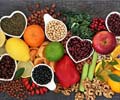

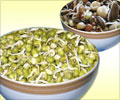
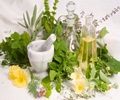
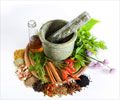




I'm a full timeHolistic Nutritionist and many people who are interested in working in the medical field explore the possibility of becoming a dietitian or nutritionist. To learn how to be a dietician, the potential student needs a find a college dietician program. The health industry is a rapidly expanding area of employment and one of the most versatile career areas in the health industry are that of dieticians and nutritionists. As healthy eating habits are one of the bases of a healthy lifestyle many dietician teach others how to improve their health and their lifestyle through changes in diet and exercise, and many others work in professional positions where they provide advice on a wide variety of other health issues. Dieticians are also often involved in helping others to learn how to improve their lifestyles. Many other dieticians and nutritionists work in commercial food service industries.